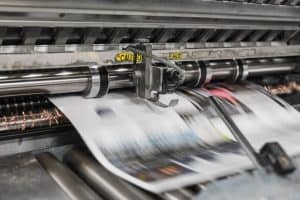Whether you’re printing books for your business or personal use, choosing the right book binding method is vital to ensuring that your final product is professional and durable. Learn more about the impacts of wire-bound book printing so that you can choose the perfect option for your project.

Durable
One of the essential impacts of wire bound book printing is that it can be highly durable, especially compared to other binding methods. As a result, it makes it an ideal choice for books that will see regular use.
Wire binding is handy for short-run and urgent projects such as cookbooks, manuals, technical catalogs, and educational booklets. It is also suitable for calendars, notebooks, and directories.
Unlike spiral binding, wire binding uses metal coils to secure the pages together. The coils are inserted into pre-punched holes on the page edges.
There are several styles of wire binding, including twin loop wire and wire comb binding. In addition, the wires can be designed in various colors and lengths to suit your project’s needs.
Another substantial impact of wire binding is that it can be used with indexed tabs to mark frequently used pages or divide the book into sections. These tabs are highly regarded in a professional setting and make navigation much easier.
Whether you want to create an employee handbook, a promotional product, or even a marketing booklet, custom wire-bound books can be an ideal way to showcase your company’s products and services. These books can be customized with a business logo and company name to make them a unique and memorable products. They can be given out at conferences, used for giveaways, or offered at events as a promotional items.
Easy to assemble
Wire-bound books, called wire comb binding or twin loop binding, are easy to create flat lay manuals, reports, planners, and notepads. They use pre-formed pairs of wire loops that run along a c-shaped unit to secure the pages as an assembled group while allowing the book to open freely without the need to hold it closed.
It makes it an excellent choice for books that need to be easily accessible by multiple people, such as business reports, instruction manuals, diaries, and hand-held cookbooks. It is also famous for lookbooks, product catalogs, sales presentations, and more.
There are several forms of wire binding, each with its pros and drawbacks. For example, double loop or wire comb binding can be used for low-page count documents, while the perfect binding is a good choice for thicker books.
A staple and duct tape solution is another popular wire binding option that works well for small projects. First, staple each book’s page about a half inch from the essential edge, then wrap and burnish duct tape over the staples to keep the pages together.
The finished product is beautiful and lays flat for easy use, but it can be tricky to assemble. You will need to fold the front and back cover in half before assembling the inside pages of your book, but it will be worth it in the end!
Easy to read
Whether it’s a reference book, instruction manual, diary, or presentation, wire-bound books are easier to read. It is because the pages can lay flat on both sides of the spine and rotate 360 degrees, making it easy to flip through them without bending them or losing sight of the text.
Another advantage of this binding method is that it is durable and seldom wears out. It means that it’s ideal for handbooks, notebooks, and brochures that are frequently annotated.
Wire-bound books can be made for a range of page counts and page thicknesses as long as the coil size is large enough to accommodate it. It makes them a good option for low-volume orders.
This method allows you to customize your documents, offering multiple lengths and color options. Comb and twin loop wire are some of the more common styles, but there are many others. Again, it’s essential to consider your customers’ preferences and the final use of your project when choosing which binding method is best for you.
Versatile
Wire binding is one of the most versatile types of book printing available, especially if you’re looking for something that has a more professional appearance. It can bind workbooks, planners, journals, and other documents that look more sophisticated than plastic coil binding.
A wire loop is inserted through holes punched in your book’s cover and pages. It is then crimped closer to form a complete circle, securing the cover and pages as an assembly yet allowing them to open freely.
This binding method can be utilized with various paper types and thicknesses. It can also accommodate dividers and index tabs to organize your document easily.
It is a popular option for producing calendars, presentations, report books, and annual reports. It is also ideal for putting together directories, product manuals, and user guides.
Another advantage of this binding style is that it can open pages a full 360 degrees, enabling them to be turned freely. It is ideal for reference books, instruction manuals, diaries, and business reports that are easy to consult hands-free.
In addition, this binding style is durable and can withstand long use without getting distorted. Therefore, it is especially recommended for notebooks, handbooks, and reports frequently annotated. Finally, this style allows you to fold or wrap the pages around for more accessible storage and transport.





